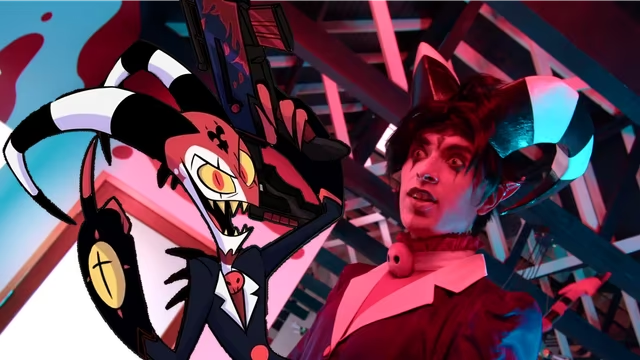If you click on a link and make a purchase we may receive a small commission. Read our editorial policy.
Berserk depicts swordfighting much more accurately than you might think, and I would know; I used to teach it [Popverse Jump]
Kentaro Miura knew how to fight with a sword and I can prove it with one page from Berserk.

Enjoy this complimentary article, previously available exclusively for Popverse members. If you like what you see, consider becoming a Popverse member.
The thing to remember about people who write on the internet is that we usually only get to show a very specific side of ourselves. You all know me as the anime-obsessed devourer of manga, but I’ve got other sides to myself. I’ve talked about being a dad before, but, not too long ago, I was a medieval fighting instructor as well. So, when I tell you that Berserk is the best portrayal of European martial arts in comics, I’m talking as both an unashamed fanboy and as someone with experience in the subject.
Buckle up, folks, cause I’m about to go full sword-nerd here in Popverse Jump.

Back before the pandemic, I was a qualified instructor of Historical European Martial Arts, or HEMA. It was largely about studying medieval manuscripts that detailed fighting techniques and using them to train in the same way that fighters did in the medieval and later periods, including sparring with each other. My work was largely focused on polearms, but I have spent enough time with a longsword in my hand to know a trained fighter when I see one.
It is no secret that Kentaro Miura put a level of detail into his artwork that is staggering, but that didn’t just extend to character designs. The more I read of it, the more I am convinced that he has studied HEMA, at least enough to bring the techniques to life on the page. Lacking the inhuman strength of Guts or the frightening speed of Griffith, Casca has to implement near-perfect techniques to survive in the harsh world of Berserk.
Berserk Volume 7 is one of the first places where Miura’s knowledge of medieval fighting styles shines through. Allow me, if you will, to showcase this page from that volume:

Here, we see Casca during the fight against the 100 soldiers sent to kill her and Guts. While Guts is off swinging his stupidly large sword around, Casca is fighting off this single opponent. She is using a near-textbook example of Fool’s guard, which has been a staple of medieval sword fighting since at least the 1300s as described by Liechtenauer. She then catches the incoming spear thrust with a transition to an Ox guard, deflecting it to the side before cutting downward into a Plow guard, catching the opponent on the wrist with her blade in the process. We even see a hint of High guard (sometimes called Tower) before she brings her sword down.
In this one page, Miura shows the four basic guards that we see throughout medieval sword fighting. They go by different names depending on the period and the country (Fiore famously added several for his reference book) but Ox, Plow, High guard, and Fool are the stances that are the foundation of longsword fighting for close to 500 years. We even see versions of them in spear, quarterstaff, and poleaxe techniques.
What is even more impressive here is that Miura doesn’t just have static pictures of Casca standing in these guards, which would imply that he is merely copying the images others have made based on medieval illustrations. Casca uses these guards as they were intended – as transition points to deflect incoming attacks and move into cuts. Each swing of her sword starts in one of these stances and ends in a different one. Miura knew how to fight with a sword and it shows in the way he draws Casca.

The thing I love most about this is Miura clearly understood that proper technique would be enough to bridge any perceived gap in strength between Casca and the men she fights against. That was the purpose of a sword, after all – it was a great leveler, removing any advantage someone had for being bigger and stronger than their opponent. Speed and technique will win out against strength any day.
This isn’t the last time we see proper historical fighting styles in Berserk. I’d argue that Griffith’s fighting style is very reminiscent of rapier techniques from the early Renaissance period and Guts certainly employs the Ox stance with his massive sword regularly simply because that is the best way to use the length of the blade to create distance from enemies.
However, Casca feels like someone who isn’t relying solely on brute strength or superior speed. Every time she fights, it feels like she is someone who has studied the blade intensely and uses it perfectly. While the manga is probably best known for its sexual and physical violence, Berserk is truly a medievalist’s dream. Kentaro Miura was someone who knew how to use a sword and it shows in how he drew his characters.
Want to know what's coming up next in pop culture? Check out Popverse's guides to:
Follow Popverse for upcoming event coverage and news
Find out how we conduct our review by reading our review policy
Let Popverse be your tour guide through the wilderness of pop culture
Sign in and let us help you find your new favorite thing.















Comments
Want to join the discussion? Please activate your account first.
Visit Reedpop ID if you need to resend the confirmation email.